Sunflower Solar Balcony Kit Review: Free Electricity at Your Fingertips!
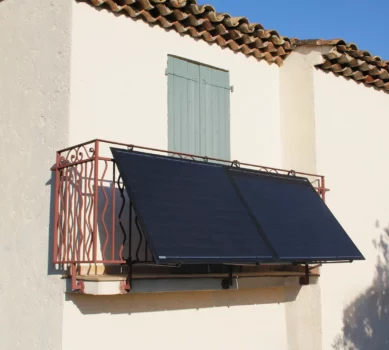
Good news: the energy transition is no longer reserved for homeowners! With the constant rise in electricity prices, more and more French people are looking for alternatives to reduce their bills. But when you live in an apartment, the options until now seemed limited. That's where Sunflower Solar comes in with its balcony solar kit, a plug-and-play solution that promises to democratize access to solar energy for all.
The concept is simple but ingenious: a complete solar panel kit specially designed to fit all types of balconies, easy to install yourself, and that plugs directly into a standard electrical outlet. The electricity produced is immediately deducted from your consumption. Brilliant, right?
But does this system really live up to its promises? That's what we'll discover in this in-depth review of the Sunflower Solar balcony solar kit.
Unboxing and Discovering the Sunflower Solar Kit
First contact with the Sunflower Solar kit: the packaging is neat and relatively compact for solar equipment. No need to plan a freight elevator or ask your bodybuilder neighbor for help! The box contains all the necessary components for installation, carefully stored and protected.

Upon opening, you'll discover:
- 2 solar panels, 220W each (440W total)
- 1 WiFi microinverter
- A complete mounting system (brackets, cables, and adjustable straps)
- Technical documentation
- Installation instructions
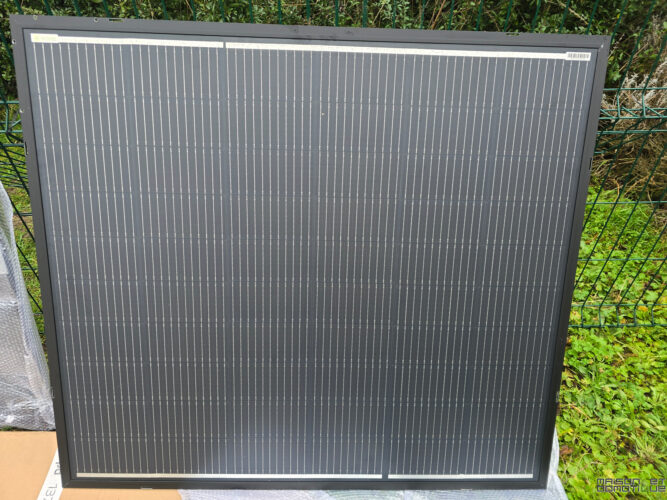
The first impression is excellent: the panels are both robust and surprisingly lightweight (only 4.85 kg each). Their design is understated and elegant, all-black, which should blend harmoniously into most balconies without creating a visual clash. The dimensions are reasonable: 1170 x 1040 x 10 mm, a format that should suit most urban balconies, while still allowing for significant productivity.

To achieve this lightweight, the manufacturer opted for new-generation hybrid panels, halfway between traditional glass panels and flexible panels. Without a glass plate, this considerably lightens the panel while maintaining protection against the elements. These panels are mounted on aluminum frames, which provide a certain rigidity, but more importantly, allow them to be oriented as desired.
What's interesting compared to other solutions we've seen is that these panels, while remaining relatively compact, offer a power output of 220Wp. These are the most powerful panels I've had the opportunity to test for balconies.
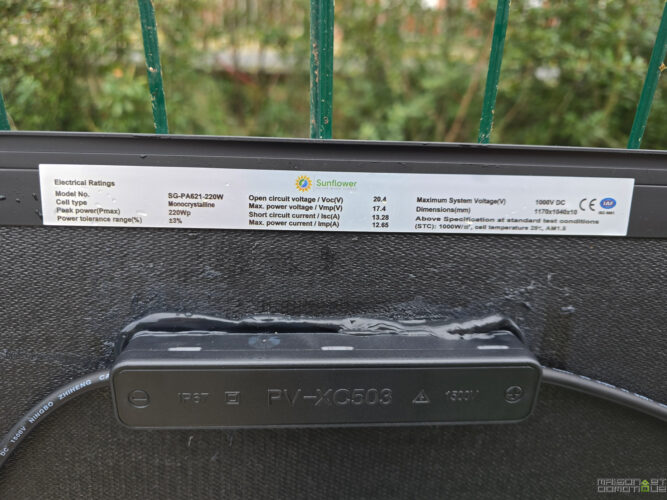
The mounting system deserves special attention: it's made of aluminum and is completely modular, allowing it to be adapted to virtually any type of railing. This is a crucial point because the diversity of balcony configurations could have been a major obstacle. Sunflower Solar has clearly thought of everything!
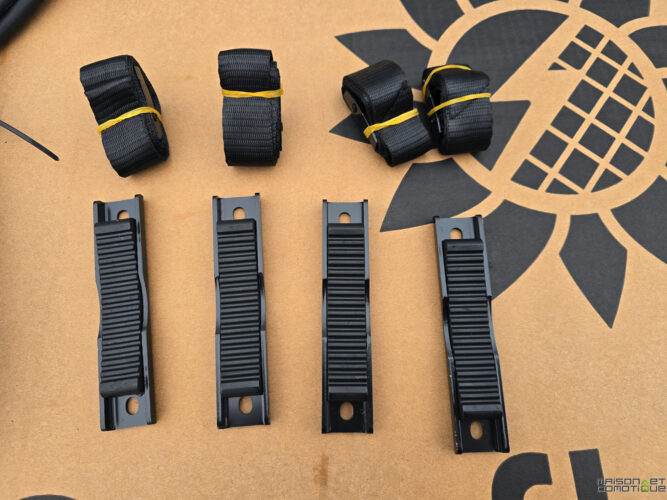
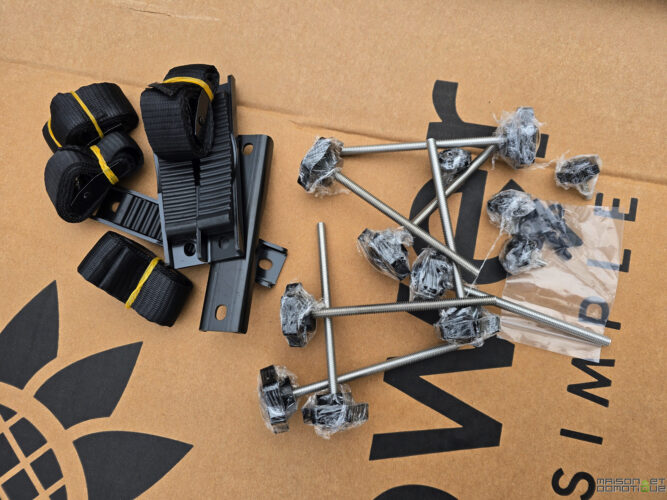


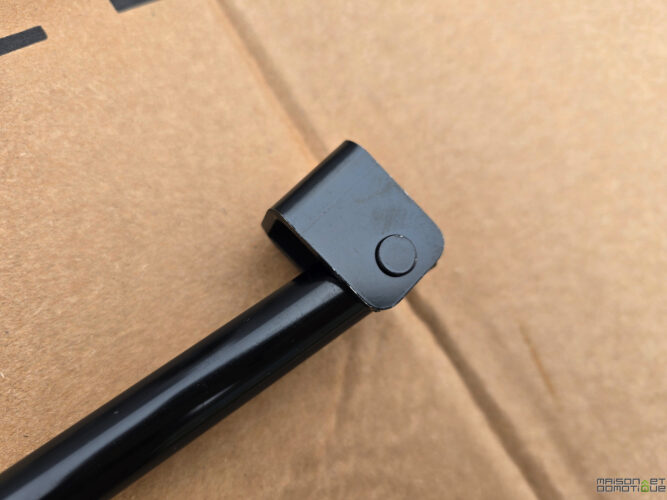
The microinverter, meanwhile, is compact and has a built-in Wi-Fi connection. It converts the direct current produced by the panels into alternating current compatible with your electrical system, while also allowing you to monitor production via the dedicated mobile app.
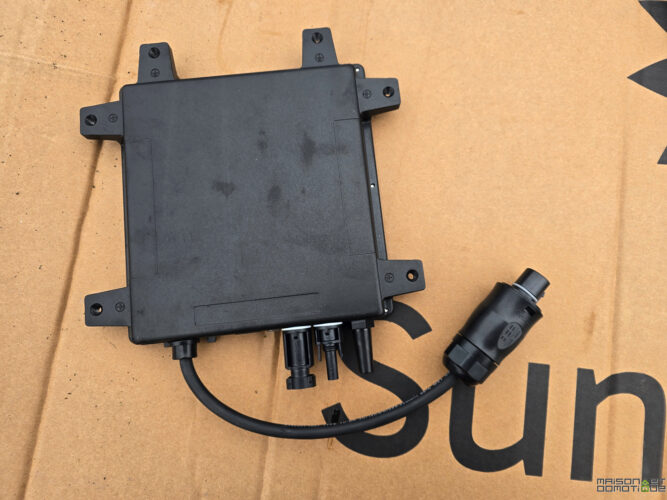

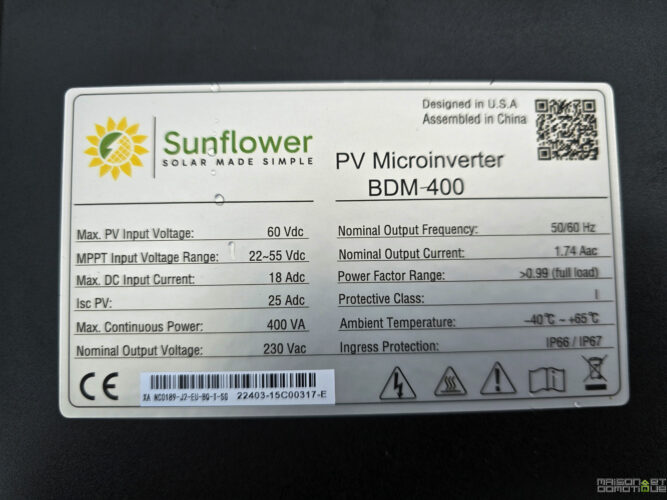
Installation: as simple as advertised?
Sunflower Solar promises installation in 15 minutes flat.
The installation process is broken down into several simple steps:
First, position the mounting brackets on the panels.

The system is ingenious: the brackets adjust to the desired angle, allowing you to optimize solar capture depending on the season and the orientation of your balcony. A real plus compared to other solutions on the market!
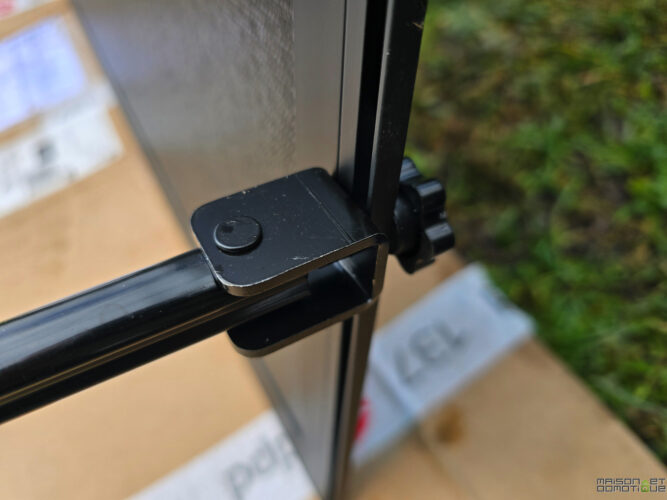
Next, attach the panels to the railing using the provided adjustable straps. These are robust (with a tensile capacity of 100 kg per strap) and UV and moisture resistant for a minimum lifespan of 20 years. The lightness of the panels makes this step much easier, even for a single person. For testing purposes, since we don't have a balcony, the panels were attached to a rigid mesh fence: it also works perfectly!
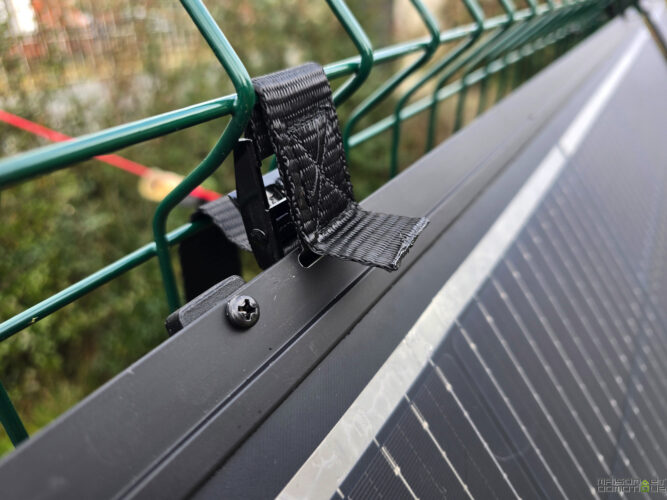
The lower part uses a system that sandwiches a railing bar, or in this case, the mesh. The screws provided are long enough to accommodate even very thick studs:

Well, here we're being very generous with our fence :p But the system still holds in place:
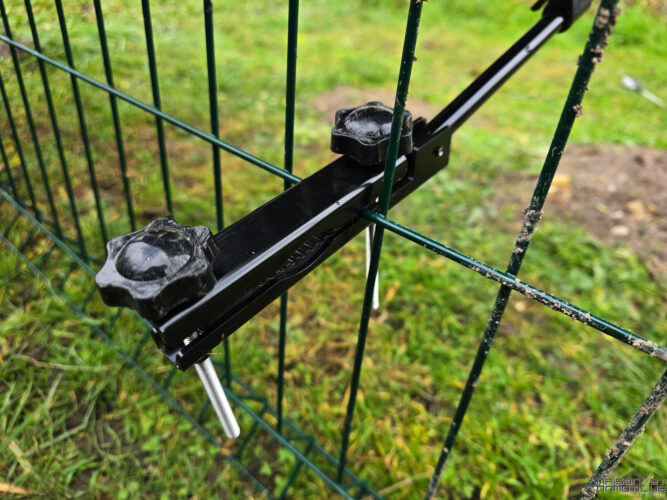
Next comes the installation of the microinverter, which simply attaches to the back of one of the pre-drilled panels.
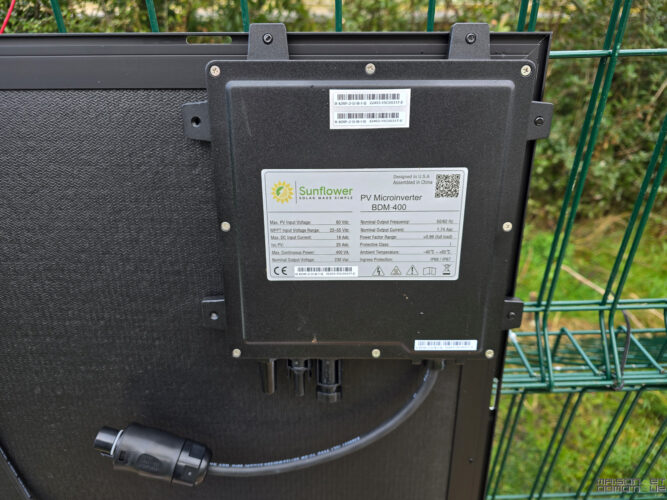
The electrical connection between the panels and the inverter is made easy by a system of standardized MC4 connectors that can't be plugged in the wrong way. It's impossible to make a mistake!

Finally, simply plug the microinverter's output cable into a standard 230V electrical outlet. And voilà, your mini solar power plant is ready to go!

So, what's the verdict on the installation time? I clocked it at 20 minutes, which is still very reasonable for a first-time installation, especially since I took a little time for the photos of this test. The 15 minutes quoted is therefore quite achievable ;-)
An important point to note: unlike other solutions, the Sunflower Solar kit allows the panels to be tilted to the optimal angle, thanks in particular to the telescopic arms at the bottom.
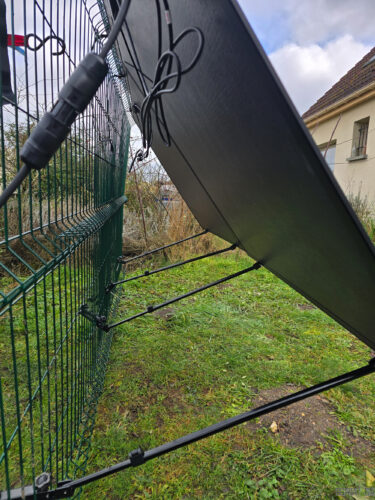
This is a considerable advantage for maximizing production, especially in winter when the sun is low on the horizon.

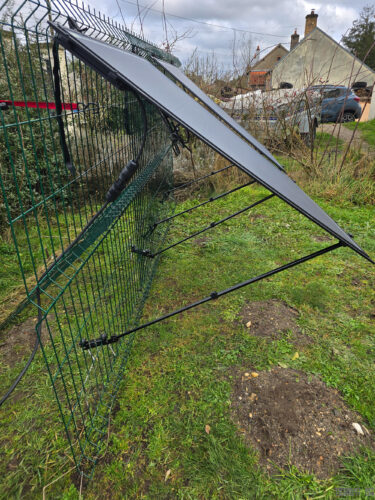
Because the panels are lightweight, changing the tilt is very easy.
The mobile app: real-time production monitoring
Once the physical installation is complete, let's move on to the digital part. Sunflower Solar offers a dedicated app to monitor its energy production in real time.
The app connects to the microinverter via WiFi and allows you to view:
- Instantaneous power production (in watts)
- Daily production (in kWh)
- Production history (day/week/month/year)
- Savings on your electricity bill
The interface is clear and intuitive, with graphs that make it easy to visualize optimal production periods. This allows you to identify the best times of day to run your energy-intensive appliances (washing machine, dishwasher, etc.) and maximize self-consumption.
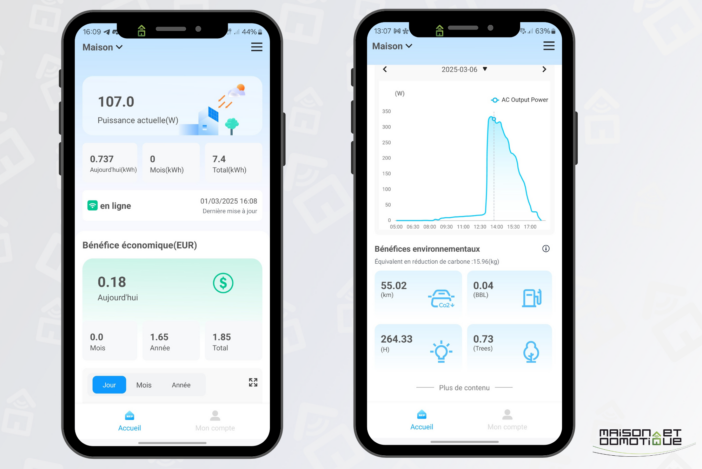
The app also allows you to check for potential problems or an abnormal drop in production, for example, which facilitates preventive maintenance by simply following the provided graphs.
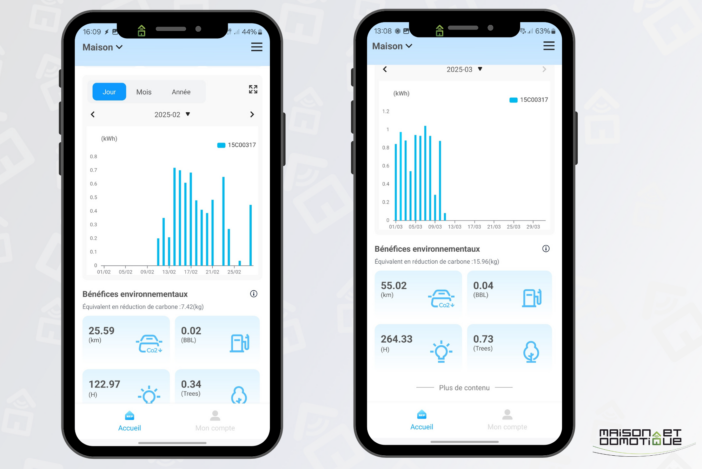
Overall, the app is functional but lacks a bit of sophistication compared to some competitors. It gets the job done, but without any frills. We would have liked a few additional features like production forecasts based on local weather or personalized optimization tips. Perhaps in a future update?
How does it work? The principle of self-consumption explained
For those new to the concept, it's legitimate to wonder how you can plug an electricity source (solar panels) directly into an outlet already powered by the grid. Isn't there a risk of short circuits or overloads?
In reality, the system works on a simple physical principle: electrons always take the shortest path. When your panels produce electricity, it is first consumed by the nearest appliances before reaching your meter. Concretely, here's what happens:
- The panels capture solar energy and convert it into electricity.
- The microinverter transforms this electricity into current compatible with your installation.
- This “solar” electricity primarily powers the appliances in your home.
- For every watt produced by your panels, you don't buy a watt from your electricity supplier.
The goal isn't to cover 100% of your needs (which would require a much larger installation), but rather to eliminate what's called the “consumption tail” – the minimum permanent consumption linked to your appliances on standby, your refrigerator, your internet box, etc. This tail generally represents between 200 and 400W continuous, or 10 to 20% of your total annual consumption.
With its 440W peak power, the Sunflower Solar kit is perfectly sized for this task. And if your tail is larger, you can install multiple kits in parallel (up to 4 per power line).
Regulatory aspects: is it really that simple?
One of the major advantages of balcony solar kits is their administrative simplicity. Unlike traditional installations, which require complex procedures, the Sunflower Solar kit benefits from a simplified regulatory framework.
You don't need a building permit or prior work authorization. The only check you need to make is the condominium regulations, which may contain specific clauses regarding the exterior appearance of balconies.
For tenants, the same rule applies: if the condominium regulations don't explicitly prohibit it, you can install your Sunflower Solar kit. This is a considerable advantage over traditional fixed installations.
The only mandatory administrative formality is to register with your electricity supplier via a Self-Consumption Agreement Without Injection (CACSI). This process is simple and can be completed online in just a few minutes. Sunflower Solar provides all the technical information needed to complete this declaration.
Profitability: the key
Let's talk numbers! The Sunflower Solar balcony solar kit is priced at €519, which represents a significant initial investment. The question of profitability is therefore crucial.
To assess the return on investment, you need to estimate the system's annual production. This, of course, depends on your geographic location and the orientation of your balcony. Winter isn't the best time of year to assess this, but I relied on the official Photovoltaic Geographical Information System website, which always gave me very realistic indications based on my other tests.
Taking the example of a south-facing balcony in Orléans (average exposure in France), we can estimate an annual production of around 504 kWh. At current electricity rates (€0.2146/kWh during peak hours), this represents an annual saving of around €108.
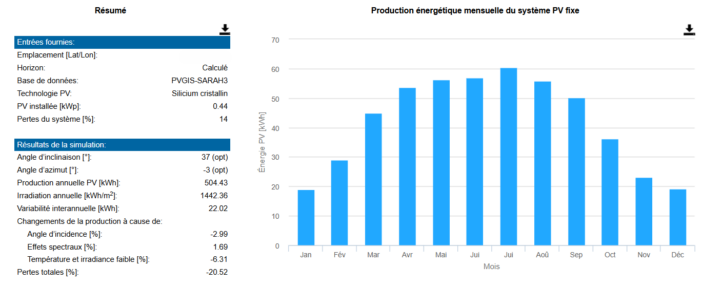
But this calculation doesn't take into account the expected increase in electricity prices. Incorporating an average increase of 5% per year (a conservative assumption given current trends), here's how my savings would evolve:
- Year 1: €108
- Year 2: €113
- Year 3: €119
- Year 4: €125
- Year 5: €131
In this scenario, the kit would pay for itself in just under 5 years. And if you live in the south of France or if electricity prices increase more rapidly, this period could be reduced to 3-4 years.
Considering that the panels are guaranteed for 20 years (with a minimum efficiency of 80% after this period) and that their actual lifespan can reach 30 to 40 years, the investment proves particularly attractive in the long term.
Let's also remember that, unlike a permanent installation, you can move with your Sunflower Solar kit. It's therefore an investment that stays with you, further enhancing its overall profitability.
Comparison with the competition
The market for balcony solar kits is still relatively small in France, with a few players offering similar solutions. How does Sunflower Solar compare to the competition?
Compared to Sunology City, which we previously reviewed, the Sunflower Solar kit offers higher power (440W versus 300W) for a lower price (€519). It clearly offers a better power-to-price ratio.
Another advantage of Sunflower Solar is its modular mounting system, which allows you to adjust the tilt of the panels according to the season, thus optimizing production throughout the year. Other systems, such as the one from Ecoflow that we reviewed, lack this feature entirely.
In terms of the mobile app, Sunflower Solar offers a dedicated solution that, while basic, provides all the essential features for tracking production. This is an area that could be improved by adding additional features, but the app does the minimum expected.
Conclusion: A solution that delivers on its promises
After several weeks of intensive testing, the Sunflower Solar balcony solar kit proves to be a remarkably well-designed solution for making solar energy more accessible, even in apartments.
Its strengths are undeniable:
- A truly simple and quick installation, accessible to all
- An ingenious mounting system adaptable to all types of balconies (or other supports, as we have seen)
- Significant power (440W) that allows for tangible savings
- A functional app for tracking production
- Excellent long-term value for money
The few areas for improvement mainly concern the mobile app, which could use a few additional features to further differentiate itself.
The question of profitability, often central to this type of investment, finds a favorable answer here with an estimated payback of between 3 and 5 years depending on your location, and a guaranteed lifespan of 20 years.
Beyond the financial aspect, it's also a concrete way to participate in the energy transition on your own scale, without complex work or long-term commitment.
Ultimately, the Sunflower Solar balcony solar kit represents an excellent gateway to the world of solar self-consumption, particularly suited to apartment dwellers who have until now been largely excluded from this energy revolution.
If you're looking to reduce your electricity bill while doing something for the planet, and you have a sunny balcony, the Sunflower Solar kit is definitely worth your consideration. It's an investment that makes sense, both economically and ecologically.
As I often say about investing in renewable energy: the best time to start was yesterday, the second best time is today. With the ever-rising price of electricity, every day you wait is a day you pay more than necessary. And that's the kind of math that never fails! And to start saving even more now, Sunflower Solar is offering you a 5% discount on your order with the partner code




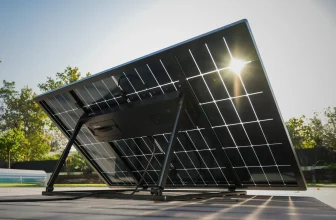
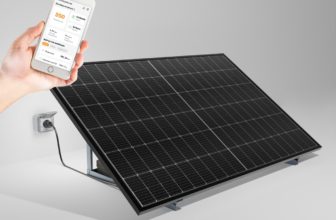


Please remain courteous: a hello and a thank you cost nothing! We're here to exchange ideas in a constructive way. Trolls will be deleted.